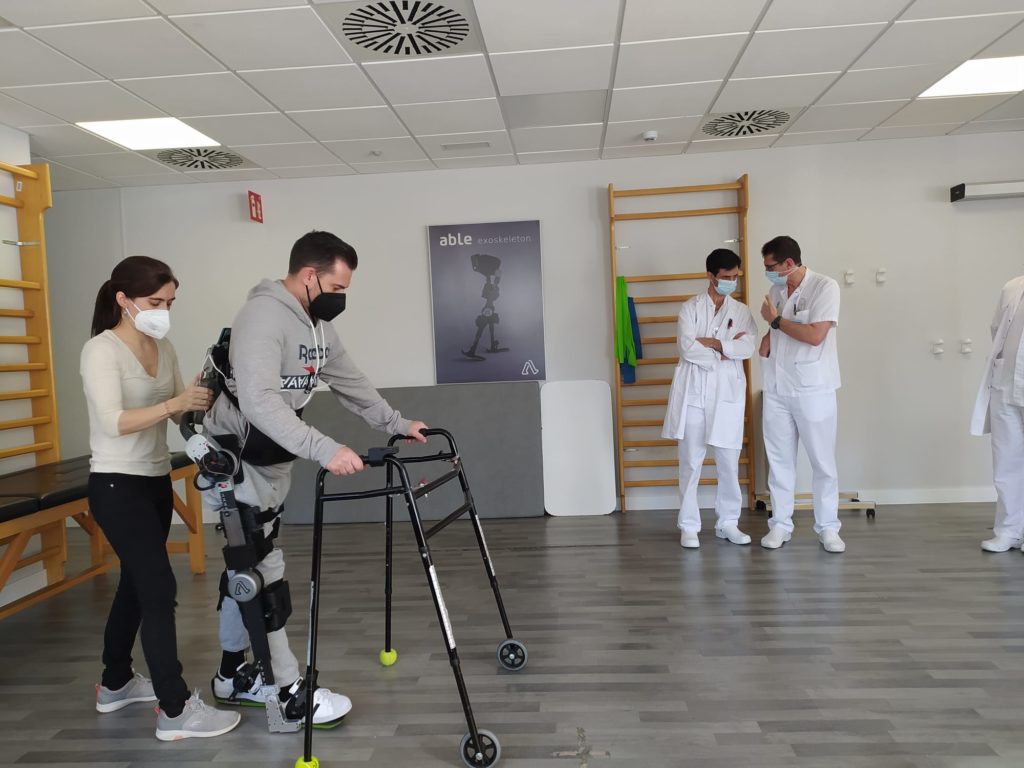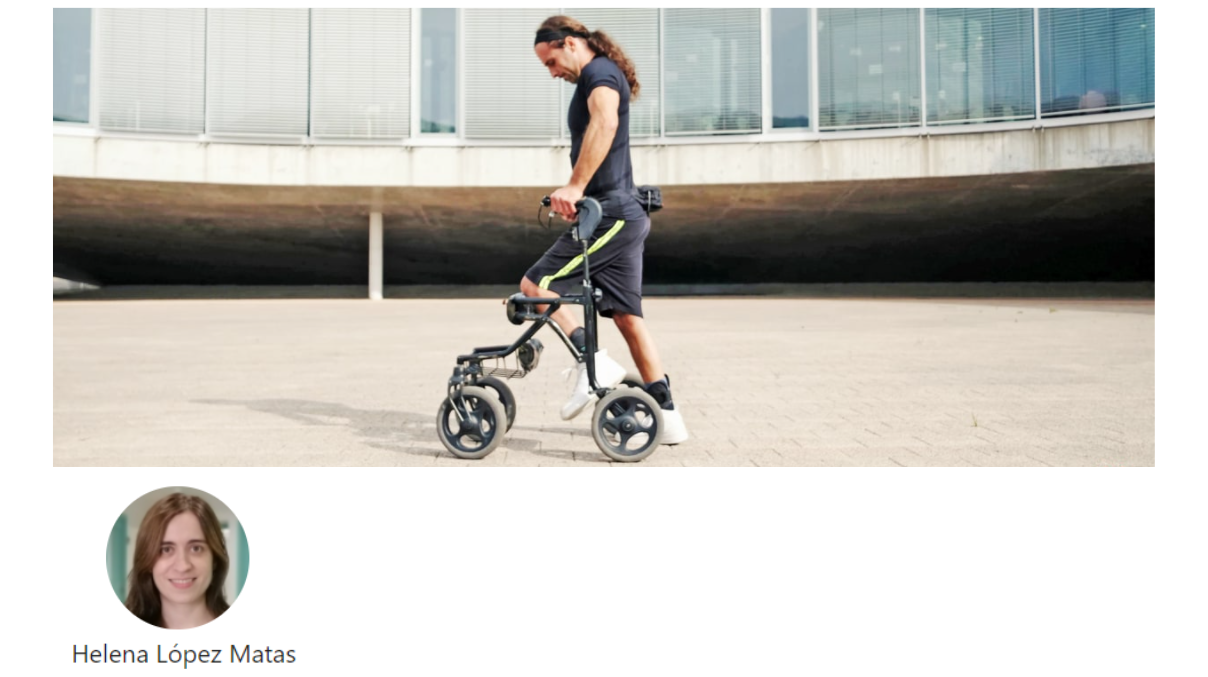
1 Clinical Specialist at ABLE Human Motion, Diagonal 647, 08028 Barcelona, Spain.
The future of rehabilitation after a spinal cord injury: neuroengineering and robotics
In recent days, numerous media have reported the news of a great advance for science, and especially for all those people with spinal cord injury and their medical and caregiver teams. The ONWARD team has developed an epidural electrical stimulation system using electrodes placed in the epidural space (between the vertebrae and the spinal cord membrane), which has allowed subjects to walk again. These electrodes receive electrical impulses from a pacemaker placed at the abdominal level, which in turn receives the sequence of impulses that it must send to the epidural stimulator from an external computer, managed by the scientific researchers.
This news has had a great impact in the media and raised many discussions in the SCI community. However, the results should be taken with caution since it is a technology in the research phase, in which a pilot clinical study has been carried out with a small sample of subjects (3 cases). After the intervention, the three subjects were able to stand up and remain standing; and with months of training and rehabilitation they returned to walking with the help of a harness and parallel bars. The next steps are to carry out a clinical trial with 50 patients and in the near future to be able to bring these advances to the market. We still do not know to which patient profile this technique can be effectively applied (level of injury, origin of the injury, time of injury, etc.) or if it may have side effects or contraindications.
On the one hand, we know that this research is advancing rapidly, but there is still significant time required for these neuroengineering techniques to reach routine clinical practice and to be accessible to any spinal cord injury patient. In the meantime, people with spinal cord injury need to continue working day by day to keep their bodies in shape, so that on the day that the possible solution arrives, their bone and muscle systems can once again support the weight and movement of their body. For this, it is necessary at a therapeutic level to use gait assistance systems such as robotic exoskeletons that are increasingly integrated into routine clinical practice.

The ABLE Exoskeleton is a medical device designed to facilitate the work of different therapists to perform gait assistance. Nor can we forget that any surgical intervention requires an intensive rehabilitation process. For months both before and after, patients will need to relearn how to move and reproduce walking in a specific and intensive way. It is also in this phase where robotic rehabilitation intervenes, which has proven to be more efficient and effective than conventional manual therapy. Devices such as the ABLE Exoskeleton become a very useful tool to be able to get the most out of the intervention, adapting the level of assistance (force made by the robot) in each joint to the specific needs of the patient in each phase of the rehabilitation process.
Such innovative advances as epidural electrical stimulation are compatible and complementary to new developments in the field of robotic exoskeletons and have the potential to radically improve the quality of life of people with spinal cord injury.



